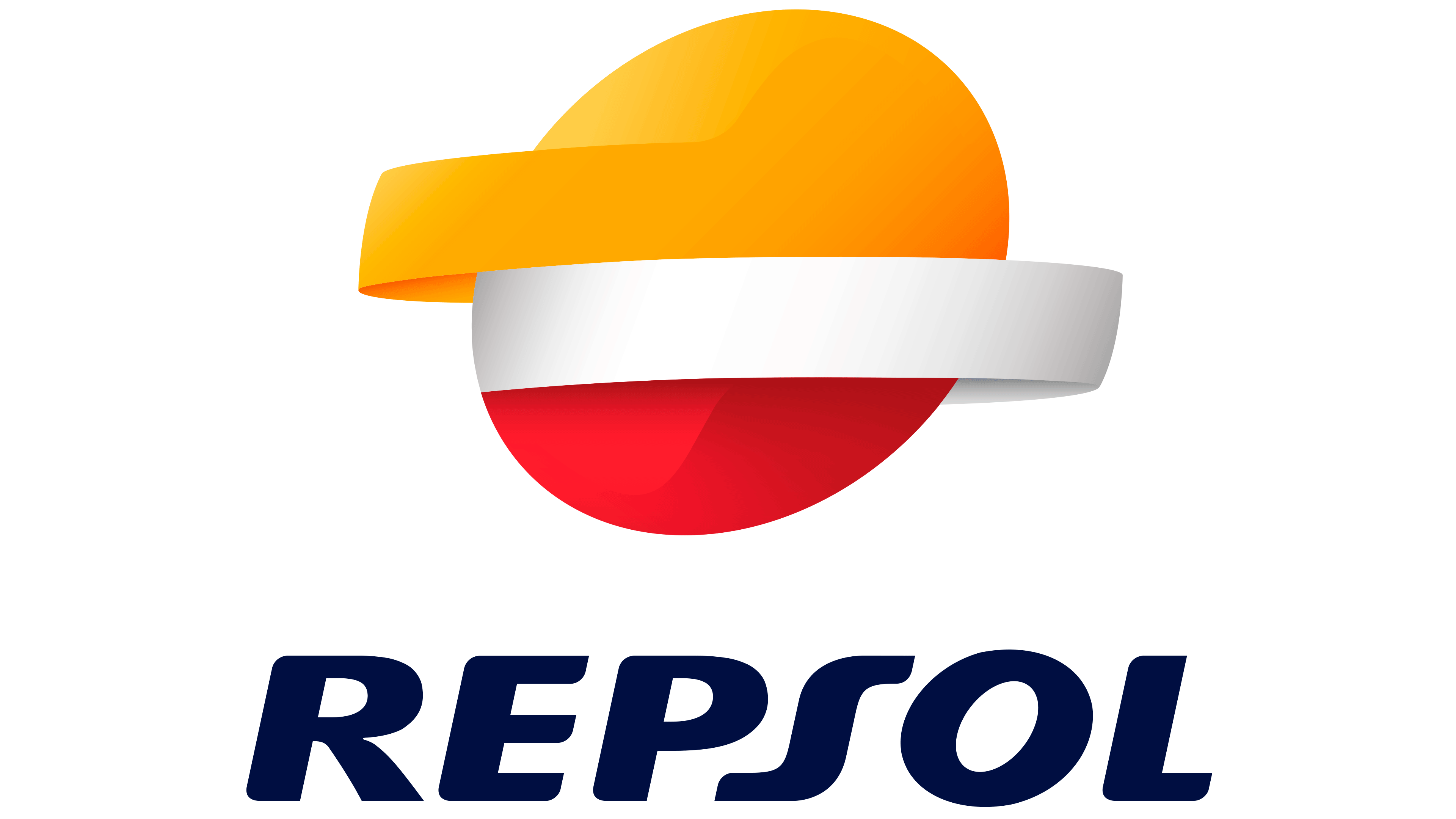Repsol Logo
Repsol is a global energy company based in Spain, specializing in oil and gas exploration, production, and refining. It operates across various markets, including Europe, Africa, Latin America, and North America. Repsol has recently been expanding into renewable energy sources, emphasizing sustainability and innovation. The company is publicly traded, with major shareholders including CaixaBank and Sacyr Vallehermoso. Repsol is committed to providing efficient energy solutions while minimizing its environmental impact, aligning with global sustainability goals.
Meaning and history
Repsol’s journey began in 1987, as a result of the merger of several companies in the Spanish energy sector. Initially focused on oil and gas exploration, production, and refining, it quickly expanded its operations globally. A pivotal moment in its history was the acquisition of YPF, Argentina’s leading oil company, in 1998, which significantly increased Repsol’s production capabilities and market presence.
In the 2000s, Repsol continued to grow, entering new markets and diversifying its operations. However, the Argentine government’s decision to nationalize YPF in 2012 was a significant setback, resulting in the loss of over half of the company’s oil and gas reserves.
Despite this, Repsol remained resilient, reshaping its strategy to focus on efficiency, technological innovation, and sustainability. The company has been actively investing in renewable energy sources, aiming to become a leading player in the transition to cleaner energy. In recent years, it has developed several wind and solar projects, making significant strides towards its goal of carbon neutrality by 2050.
Today, Repsol is a major global player in the energy sector, with operations spanning four continents. It is publicly traded on the Spanish stock exchange, with key shareholders including CaixaBank and Sacyr Vallehermoso. As Repsol continues to evolve, it remains committed to providing efficient and sustainable energy solutions to meet the world’s growing demands.
1951 – 1987
Before adopting its modern brand names, the logo consisted of a series of concentric circles in various hues. The design featured a classic roundel with a crimson border encircling a cerulean core, which was divided by a pristine white ring. In the midst of this composition, a stylized letter “R” was placed, characterized by its extended horizontal line that gracefully surpassed the boundaries of its vertical counterpart. This emblem served as a visual representation of the brand’s identity, encapsulating its essence and values in a symbolic manner. The blend of vibrant red and tranquil blue, separated by the purity of the white ring, created a harmonious and aesthetically pleasing image that resonated with the audience, leaving a lasting impression on their minds.
1987 – 1997
The inaugural depiction features an expansive, horizontal plane symbolizing the junction of the ocean and the heavens, coupled with the depiction of the sun at dawn or dusk, as well as its reflection upon the aquatic surface. This emblem is a unique signature that encapsulates the quintessence of a maritime sunset, painted in a palette of rich crimson, amber, and deep sapphire hues. Suspended above this metaphorical horizon, the word “Repsol” is etched in slanted, capitalized typeface, adding a touch of modernity and sophistication to the design. The amalgamation of these elements not only represents the brand’s identity but also serves as a visual metaphor for its commitment to harmonizing with nature’s rhythms and cycles, while also embracing innovation and progress.
1997 – 2012
In 1996, the corporation initiated the process of crafting its subsequent emblem, which was formally incorporated a year later. This design retained its longevity, prevailing for over a decade and a half, while encompassing similar components to its antecedent. The creative minds maintained the presence of the horizon, albeit in a more abbreviated form, and opted for a white hue. Moreover, they rectified any asymmetries to foster a more balanced visual appeal. The corporate moniker was strategically positioned above the solar representation. Additionally, a square backdrop, painted in shades of blue and black, was integrated, serving as a metaphorical nod to the oil industry, thereby solidifying the brand’s connection to its roots.
2012 – Today
During this epoch, a significant rejuvenation and enhancement of the brand’s symbolic representation were undertaken to render it more captivating and comprehensible, primarily spurred by the escalating rivalry in the realms of oil refinement and gas production.
The executives mandated a fresh assortment of graphic constituents, placing a premium on contemporaneity. Subsequently, the somber-toned square was excised from the insignia, with the textual element being repositioned to the starboard, reverting its color scheme to the original.
The hemispherical components witnessed an augmentation in their dimensions, instilling a sense of proportionality, complemented by a subtle inclination towards the right. A diminutive luminescence was artfully integrated into the upper segment representing the sun. Meanwhile, the central line was rendered in a lustrous silver hue, bordered by a gentle grayish tint, thereby transforming it into a metallic element basking in a frosty gleam.















